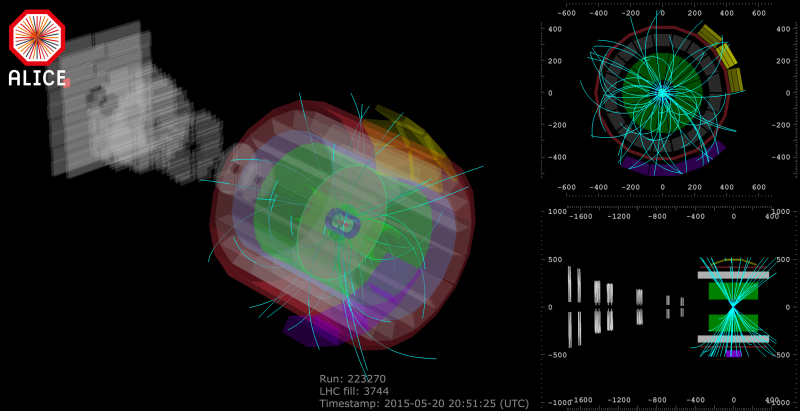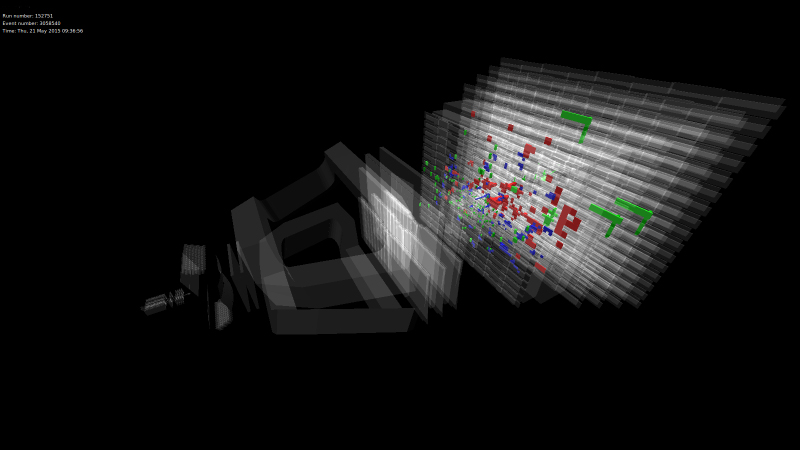Today engineers at the Large Hadron Collider successfully collided several tightly packed bunches of particles at 13 trillion electronvolts. This is one of the last important steps on the way toward data collection, which is scheduled for early June.
As engineers ramp up the energy of the collider, the positions of the beams of particles change. The protons are also focused into much tighter packets, so getting two bunches to actually intersect requires very precise tuning.
“Colliding protons inside the LHC is equivalent to firing two needles 6 miles apart with such precision that they collide halfway,” says Syracuse University physicist Sheldon Stone, a senior researcher on the LHCb experiment. “It takes a lot of testing to make sure the two bunches meet at the right spot and do not miss each other.”
Engineers spent the last two years outfitting the LHC to collide protons at a higher energy and faster rate than ever before. Last month they successfully circulated low-energy protons around the LHC for the first time since the shutdown. Five days later, they broke their own energy record by ramping up the energy of a single proton beam to 6.5 trillion electronvolts.
High-energy test collisions allow engineers to practice steering beams in the LHC.
“We have to find the positions where the two beams cross, so what we do is steer the beams up and down and left and right until we get the optimal collision rate,” says CERN engineer Ronaldus SuykerBuyk of the operations team.
In addition to finding the collision sweet spots, engineers will also use these tests to finish calibrating the machine components and positioning the collimators, which protect the accelerator and detectors from stray particles.
The design of the LHC allows more than 2800 bunches of protons to circulate in the machine at a time. But the LHC operations team is testing the machine with just one or two bunches per beam to ensure all is running smoothly.
The next important milestone will be preparing the LHC to consistently and safely ramp, steer and collide proton beams for up to eight consecutive hours.
Declaring stable beams will be only the beginning for the LHC operations team.
"The machine evolves around you," says CERN engineer Jorg Wenninger. "There are little changes over the months. There’s the reproducibility of the magnets. And the alignment of the machine moves a little with the slow-changing geology of the area. So we keep adjusting every day."
















